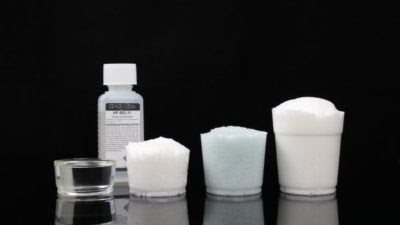A high-efficient antifoaming agent is chemical additives, also referred to as defoamers. It reduces and hampers the foam formation in industrial processes. It is generally insoluble in a foaming medium and possesses surface-active properties. It offers essential characteristic for instance low viscosity and spread rapidly on the foamy surface. It is widely utilized in the sugar beet industry. It is also used in fried foods, for instance, potato chips, and various other fried snacks.
According to the study, “Global High Efficient Antifoaming Agent Market Status (2015-2019) and Forecast (2020-2024) by Region, Product Type & End-Use” the key companies operating in the global high efficient antifoaming agent market are Levaco Chemicals, Evonik Industries, Jiangsu Jiahua Advanced Materials Technology Co. Ltd., BASF, PennWhite, ZILIBON CHEMICAL, Air Products, Kemira Oyj, Sanco Industries Inc., Shin-Etsu Chemical Company, AB Specialty Silicones, Performance Chemicals LLC, Merck & Co., Ashland Inc., Elementis Plc, Dow Consumer Solutions, Wacker Chemie AG, Ecolab, Ecological Laboratories Inc., TRANS-CHEMCO, INC, Elkay Chemicals Private Limited, COVENTYA India Pvt. Ltd., HiMedia, K.K. Chempro India Pvt. Ltd., Barth-Haas Group. These are large chemical players having dedicated manufacturing technologies and experience & expertise to manufacture high efficient antifoaming agents. Players are widening their distribution channels across emerging economies to cater to the rising demand for defoamers in these countries.
Based on type, high efficient antifoaming agent market is segmented into oil-based, alkyl based, water-based, silicone-based, non-silicone based, polymer and others. An oil-based antifoaming agent possesses an oil carrier such as vegetable oil, mineral oil, and white oil that is insoluble in a foaming medium. Water-based antifoaming agents are different types of waxes & oils dispersed in a water base. These waxes are long-chain fatty acid soaps, fatty alcohols, or esters. Silicone and non-silicone-based antifoaming agents such as polyethylene oxide and propylene oxide-based defoamers are extensively used in the pharmaceutical industry. Silicone-based antifoaming agents are used in the petroleum processing industry while silicone and non-silicone-based antifoaming agents are used in the construction industry. Based on function, the market is segmented into emulsifier, stabilizer, thickener, texturizer and others. In addition, based on the end-use industry, the market is segmented into the pulping & papermaking industry, paints & coatings industry, oil & gas industry, pharmaceuticals industry, food & beverage industry, textile industry, detergents industry and others (lubricants and agrochemicals).
The high efficient antifoaming agent market is driven by an increase in demand from emerging economies, followed by growth in environmental concerns & regulatory guidelines and expansion of various end-user industries. However, reverse trends and limited awareness may impact the market. Moreover, growth in innovations in the composition and performance of de-foamers is a key opportunity for the market.
Based on geography, the Asian-Pacific region holds the major share in high efficient antifoaming agent market owing to growth in environmental concerns & governing guidelines regarding toxic emissions through certain industries in the region. Whereas, the European and North-American regions are estimated to witness higher growth rate rise in demand from pharmaceutical industries and growth in food & beverage industries over the forecast period. In the near future, it is estimated that the market will be reached at a rapid pace as a result of extensive expansion in the application industries during the forecast period.
For More Information, refer to below link: -
Related Reports: -
Contact Us: -
Ken Research
Ankur Gupta, Head Marketing & Communications
+91-9015378249


No comments:
Post a Comment